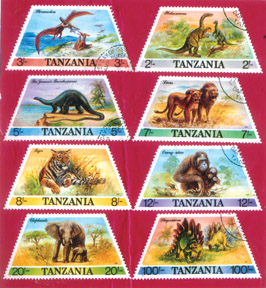|
dailynews |
|
|
|
|
|
OTHER LINKS |

|

|

|
|
|
|
|
Stamps are issued throughout the world for three distinctive purposes. One is as a pre-payment of postage in the transmission of letters, parcels etc., Another is as a publicity medium and the third is as a means of earning much needed foreign exchange.
In order to achieve all these purposes, whenever new stamps are issued, they must systematically come out at right intervals. Whatever to be honoured should be done so with well-designed commemorative stamps.
All such stamps should be produced with the sole purpose of pleasing young collectors. Definitives shouldn’t be in use for too long periods - a fact which will harm the hobby as well as the economy.
If stamp-collecting was not a life-long hobby of millions of children and adults right round the world, stamps may not have had a significant place in society as evidenced today.
Once, the supreme world body, the U.N.O. decided to call this activity, an international hobby and to bless it with a set of stamps in 1986.
That was not all. Ten years later, the same U.N.O. Postal Administration came out with yet another six stamps to announce our hobby is international and thus blessed it again. Stamp enthusiasts are quite happy and pleased as a result.
We observe that in many parts of the world, when new stamps are issued, they are very careful to offer them in the most acceptable manner. The themes and the denominations chosen for commemoratives are of utmost importance and are able to satisfy most of the collectors. In our country there is no official unit to look after the hopes and aspirations of the innocent stamp collector.
|
|
In the circumstance, we may look around to note how our neighbouring countries treat the young stamp collectors as far as stamps of their countries are concerned.
Indian Postal Authority has issued an attractive set of six stamps depicting popular folk stories and the stamps are shown here.
Many countries have set apart either a day, or a week or a full month to celebrate the stamp collecting hobby.
In Sri Lanka we have not been able to declare even a single day as “Stamp Day.” There are stamp weeks and stamp months in other countries. Postal Museum is still out of reach to our schoolchildren.
You will see on this page a set of stamps from Tanzania in Africa.
These trapezium shaped stamps are a treat to collectors and they will go at any length to acquire them if available.
Such is the craze for this kind of stamps and is there any one who might suggest stamps of that kind of format to be issued in our country too!
Young Talents
winner of Effective Speaking
Shamana Siraj won prizes for Grade Preliminary in Spoken English and Effective Speaking at the All-Island Graded Examinations 2005 conducted by the Institute of Western Music and Speech. She also won a special award for the Youngest Candidate for Effective Speaking examination 2005. Shamana is a pupil of Mrs. Sayuri Munasinghe of Funkids Activity School, Colombo.
Folk tales of Sri Lanka - 9
The story of ‘Goraka Mula’
 One day, the Queen on one of her routine visits to the Royal Kitchen
found that ‘Goraka’ (used in curries) was not available.
One day, the Queen on one of her routine visits to the Royal Kitchen
found that ‘Goraka’ (used in curries) was not available.
When she came out of the Royal Kitchen, the Queen saw Andare on his way to the Palace. She thought she could get some ‘Goraka’ from Andare.
“Come here, Andare”. I need some ‘Goraka’ for cooking purposes. When you come tomorrow bring a big ‘Goraka Mula’ to the Palace.
Andare knew very well that could mean two things. On the one hand - ‘Goraka Mula’ indicated a bundle of goraka, on the other hand - Goraka Mula’ meant - the root of a Goraka tree. Meanwhile Andare remembered the big Goraka tree in his immediate neighbour’s garden. He was not on good terms with his neighbour, so he thought of a plan.
He walked into his neighbour’s house and said the King had issued an order to bring the root of a big Goraka tree on the following day.
The neighbour did not object because it was a Royal decree. So Andare called a few able bodied villagers and cut down the Goraka tree and separated the root.
On the following day, the King was surprised to see a big Goraka root lying on the Royal compound. He called Andare why he brought such a big Goraka root to the Palace.
“Your Majesty’, the Queen asked me to bring a Goraka Mula so I obeyed her orders, Andare said. The King burst out laughing.
![[Aunt Mali’s Children]](Children.jpg)









